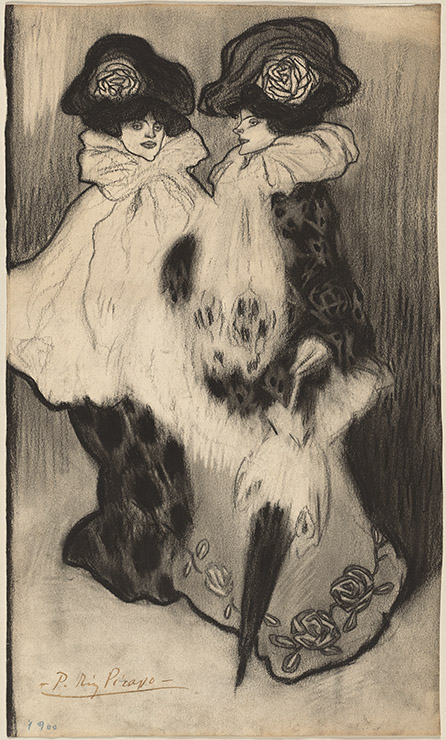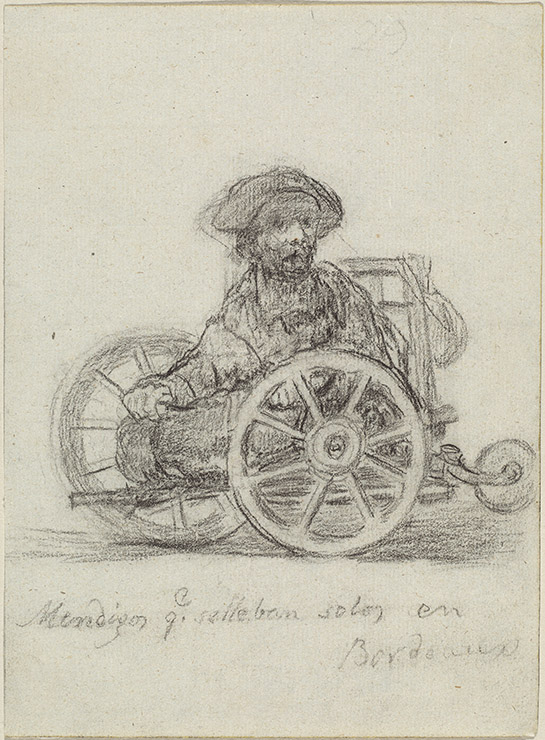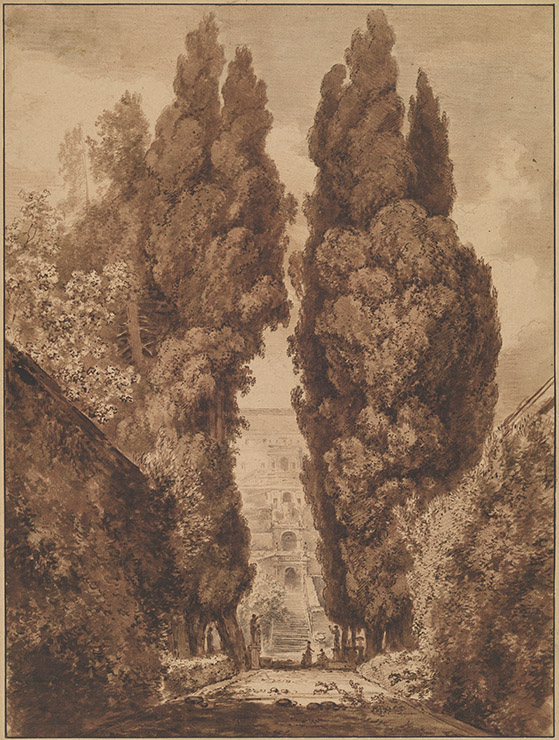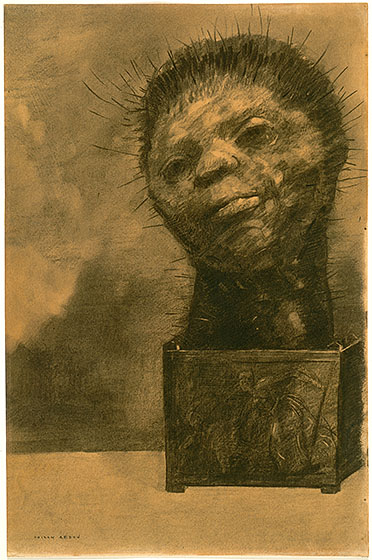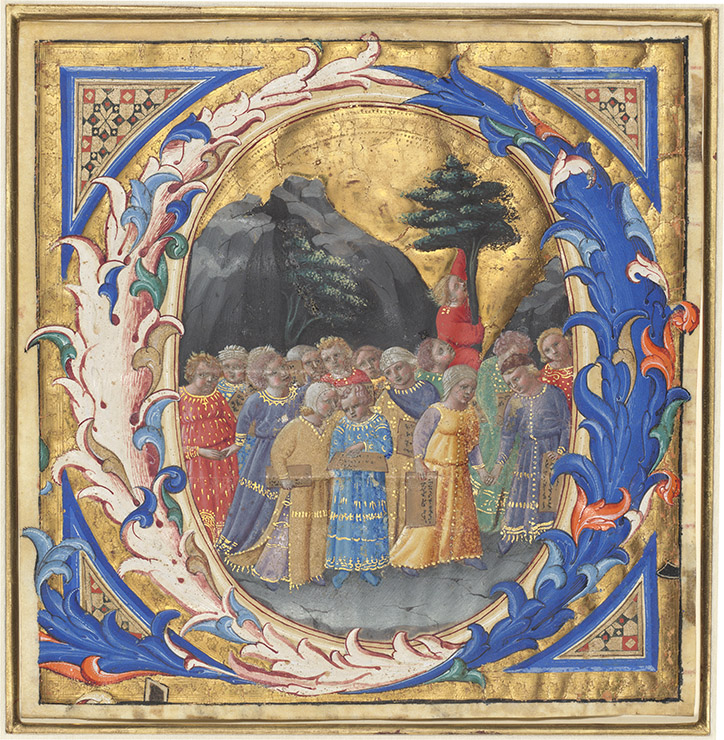You can bike the Mt. Vernon Trail but you're better off riding your own bike than renting one of these available for rent at the Washington Sailing Marina since, of the bikes pictured above, only one was suitable for riding. All the others had flat tires, the attendant said. Photo by Patricia Leslie
The "quality" bikes (says the Washington Sailing Marina's website) are so bad (they remain outdoors during the elements) the hand grips stick to your hands but an attendant fixed that with paper towels which he taped to the handle bar. Nice! Actually, they worked for the whole ride. Whatdya expect for $11/hour? Like everything else, you get what you pay for: Here, not much. Christine had to ride a man's bike without a kickstand, and it may not have had brakes either. At least, it had wheels which went around/Photo by Patricia Leslie
Along the Mt. Vernon Trail heading toward Alexandria. A straight shot/Photo by Patricia Leslie
Along the Mt. Vernon Trail heading toward Alexandria. Up ahead, a big curve down a hill/Photo by Patricia Leslie
Along the Mt. Vernon Trail heading toward Alexandria, a good place to take your dog out for a Sunday stroll in the park/Photo by Patricia Leslie
Along the Mt. Vernon Trail in Alexandria. Look out for drivers opening car doors into you and your bicycle!/Photo by Patricia Leslie
A park alongside the Potomac River in Alexandria/Photo by Patricia Leslie
A park alongside the Potomac River in Alexandria/Photo by Patricia Leslie
In a park alongside the Potomac River in Alexandria, you can read under an umbrella/Photo by Patricia Leslie
Along the Mt. Vernon Trail in Alexandria/Photo by Patricia Leslie
Along the Mt. Vernon Trail in Alexandria, look! In the sky! It's a bird! It's a plane! It's a plane!/Photo by Patricia Leslie
Along the Mt. Vernon Trail near Alexandria/Photo by Patricia Leslie
Along the Mt. Vernon Trail near Alexandria/Photo by Patricia Leslie
Along the Mt. Vernon Trail near Alexandria there's plenty of room to ride, walk, and run/Photo by Patricia Leslie
Along the Mt. Vernon Trail near Alexandria/Photo by Patricia Leslie
It may seem like you're in a swamp along the Mt. Vernon Trail near Alexandria and that's because you are!/Photo by Patricia Leslie
Along the Mt. Vernon Trail near Alexandria, dogs are welcome and a'scampering they will go!/Photo by Patricia Leslie
A gorgeous scene overlooking the Washington Sailing Marina from the Mt. Vernon Trail/Photo by Patricia Leslie
Time for a brew at the Washington Sailing Marina/Photo by Patricia Leslie
Time to sit and relax at the Washington Sailing Marina and watch the planes come and go, in and out of National Airport/Photo by Patricia Leslie
patricialesli@gmail.com
The "quality" bikes (says the Washington Sailing Marina's website) are so bad (they remain outdoors during the elements) the hand grips stick to your hands but an attendant fixed that with paper towels which he taped to the handle bar. Nice! Actually, they worked for the whole ride. Whatdya expect for $11/hour? Like everything else, you get what you pay for: Here, not much. Christine had to ride a man's bike without a kickstand, and it may not have had brakes either. At least, it had wheels which went around/Photo by Patricia Leslie
Along the Mt. Vernon Trail heading toward Alexandria. A straight shot/Photo by Patricia Leslie
Along the Mt. Vernon Trail heading toward Alexandria. Up ahead, a big curve down a hill/Photo by Patricia Leslie
Along the Mt. Vernon Trail heading toward Alexandria, a good place to take your dog out for a Sunday stroll in the park/Photo by Patricia Leslie
Along the Mt. Vernon Trail in Alexandria. Look out for drivers opening car doors into you and your bicycle!/Photo by Patricia Leslie
A park alongside the Potomac River in Alexandria/Photo by Patricia Leslie
A park alongside the Potomac River in Alexandria/Photo by Patricia Leslie
In a park alongside the Potomac River in Alexandria, you can read under an umbrella/Photo by Patricia Leslie
Along the Mt. Vernon Trail in Alexandria/Photo by Patricia Leslie
Along the Mt. Vernon Trail in Alexandria, look! In the sky! It's a bird! It's a plane! It's a plane!/Photo by Patricia Leslie
Along the Mt. Vernon Trail near Alexandria/Photo by Patricia Leslie
Along the Mt. Vernon Trail near Alexandria/Photo by Patricia Leslie
Along the Mt. Vernon Trail near Alexandria there's plenty of room to ride, walk, and run/Photo by Patricia Leslie
Along the Mt. Vernon Trail near Alexandria/Photo by Patricia Leslie
It may seem like you're in a swamp along the Mt. Vernon Trail near Alexandria and that's because you are!/Photo by Patricia Leslie
Along the Mt. Vernon Trail near Alexandria, dogs are welcome and a'scampering they will go!/Photo by Patricia Leslie
A gorgeous scene overlooking the Washington Sailing Marina from the Mt. Vernon Trail/Photo by Patricia Leslie
Time for a brew at the Washington Sailing Marina/Photo by Patricia Leslie
Time to sit and relax at the Washington Sailing Marina and watch the planes come and go, in and out of National Airport/Photo by Patricia Leslie
patricialesli@gmail.com






















